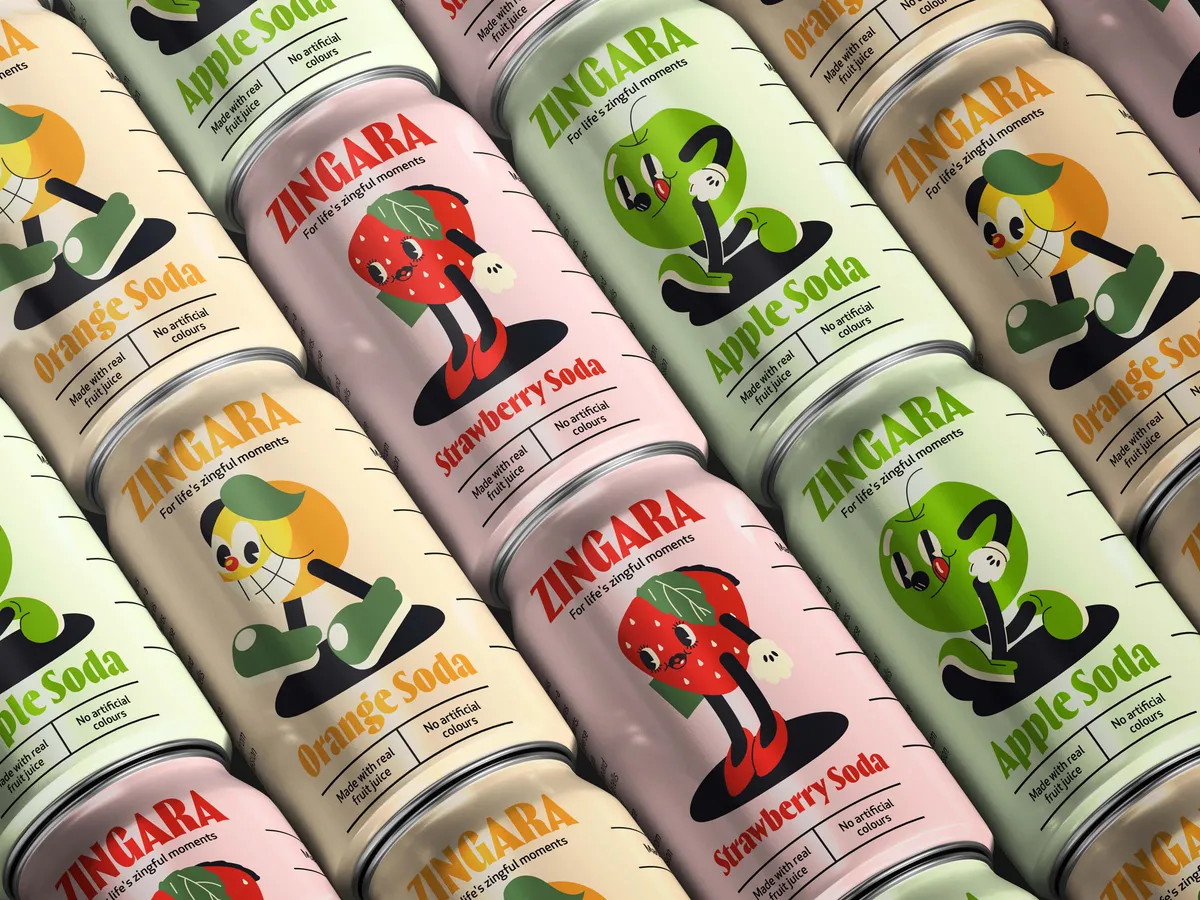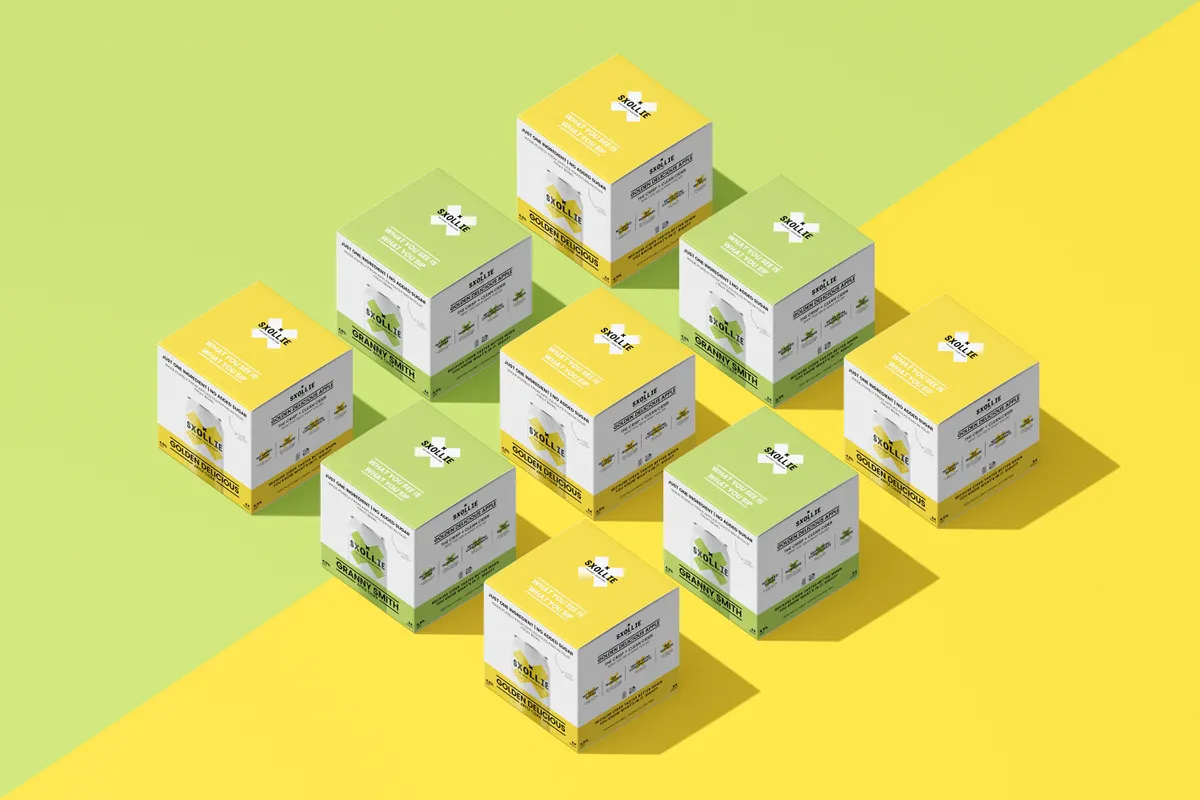
Looking good is one thing. Being understood? That’s what makes brand design work. Visuals catch attention. Meaning holds it. At its core, brand design is the strategic process of shaping a brand’s identity through visual and emotional cues. This includes everything from your logo and colour palette to typography, packaging, and tone of voice. All these elements come together to build a brand that people recognise, trust, and remember. And in a world drowning in choice, that’s what you need for survival.
In this article, we’ll break down what brand design covers, why brand design matters for your business growth, and spotlight real-world brands that nailed the brief.
There are a lot of strands to brand design that aren’t talked about. There’s a huge focus on colour palettes, your logo and yeah sure, they’re important – but they’re just the tip of the iceberg. Brand design is layered. There’s a full system behind your visual identity. Let’s break down the full picture so you can see what brand design really involves.
Logo
An obvious one – your logo is something you want people to visualise whenever they hear your brand. It's the visual cue people remember most. Take a look at one we've just done for our client: Methodology 👇.

Colour Palette
Colours are emotional shortcuts. It’s a fast track to emotion, tapping into our subconscious before a single word is read. That’s where colour psychology comes in. While it’s not an exact science, certain hues tend to trigger familiar feelings: blue suggests trust, red brings energy, and green hints at sustainability. Use them right, and you might build an emotional connection. Colour palettes help to give your brand a consistent visual rhythm across everything from packaging design to your website.

Typography
Typography is the voice your brand speaks in, even when it’s silent. A serif might say “heritage and trust,” while a sans-serif shouts “clean and modern.” But beyond tone, typography can help you stand out. Want to feel bold? Quirky? Luxurious? The right typeface can tell that story in an instant. Choose your typography wisely because people are reading into your font choices whether they realise it or not. This is also where it’s worth bringing in brand designers – they know what works for you and what doesn’t.

Imagery and Iconography
Your choice of photos, graphics, and icons needs to speak to your brand’s personality. Do you favour minimalism? Or do you want your imagery and iconography to be bold and out there? These are questions you’ll want to answer early on to keep your visual identity consistent and intentional. There’s tons of room to play, too. With Zingara, we created a set of flavour mascots that not only added character but helped build brand story and recognition in a competitive, fast-moving category. Thoughtful imagery can be storytelling in disguise when it’s done right.

Layout and Composition
Good design is also created by how you arrange it. Layout and composition control how your brand is experienced at a glance. Smart use of white space gives your visuals room to breathe, making content easier to digest and helping the important stuff stand out. Think about where your logo sits, how your text flows, and whether your design leads the eye naturally. A well-structured layout creates clarity, consistency, and a polished look that builds trust way before anyone reads a word.

Brand Guidelines
A master doc that keeps your visuals and voice consistent across every touchpoint, from pitch decks to packaging. Brand guidelines outline how your visuals and voice should be used – covering everything from logo placement and colour codes to tone of voice and social templates. They’re especially useful if you’ve got a bigger team or work with external partners. If you want consistency (and you do – it's everything), you need to give people the tools to stick to. Otherwise, your brand starts to look nothing like you. Guidelines keep everything aligned, polished, and unmistakably “you.”
Tone of Voice
How you say things is just as important as what you say. Friendly? Authoritative? Witty? This guides your communication style.
Packaging Design
Packaging design is where your brand meets the real world – sitting on a shelf, being unboxed, or shown off in an Instagram haul. It has to hit the mark and all of the above will help you in creating packaging that’s purposeful and built to stand out, tell your story, and stick in people’s minds.
Digital Presence
Your brand needs to show up online just as clearly as it does on the shelf. From your website UX to your Instagram grid, everything should feel like it’s coming from the same place. A website is often where customers decide if they trust you. And your social media? That’s where they decide if they like you. If your tone, visuals, and design are all over the place, you lose them fast. Consistency here is the main strategy.

✔️ Enhances brand visibility
✔️ Fosters customer loyalty
✔️ Supports marketing efforts
✔️ Attracts your ideal audience
✔️ Drives measurable business growth
Making the Dentist Feel Like a Place You Want to Go
Under new ownership, Ham Dental needed more than a fresh lick of paint – they needed to change how people felt about going to the dentist. The goal? Attract new clients while reassuring existing ones that this wasn’t the same old drill-and-fill experience. They wanted something friendlier, more human, even fun.
We kicked things off with brand workshops to get under the surface. What really made Ham Dental different was their people and how they treated patients. So we built the brand around that. A blended icon, modern typography, and a bold colour palette came together to give the practice a new energy and approachability. The result? A dental brand that makes people want to book an appointment.


The Challenge:
Burberry, a hallmark of British luxury fashion, found itself drifting away from its roots, embracing avant-garde designs and high-priced items that alienated its core customer base. This shift led to declining sales and a diluted brand identity.
What They Did:
Under the leadership of CEO Joshua Schulman, appointed in 2024, Burberry initiated a strategic pivot to realign with its heritage. The brand refocused on its iconic products _ trench coats, scarves, and the classic Burberry check. Marketing campaigns featured British celebrities like actress Olivia Colman and footballer Cole Palmer, which emphasised traditional British imagery, taking customers back to the brand's origins. Product offerings were recalibrated to highlight Burberry's strengths, particularly in outerwear, while reducing emphasis on less successful categories like handbags.
The Result:
This strategy struck a chord. By mid-2025, Burberry’s share price had more than doubled from its one-year low, reflecting renewed investor confidence and market momentum. The brand’s clear return to its roots helped stabilise its market position and re-engage lapsed customers.
✔️ Adaptability: Design that evolves stays relevant.
✔️ Consistency: Keep every touchpoint unmistakably “you.”
✔️ Simplicity: Minimalism can say more than clutter ever could.

Image source: uk.fashionnetwork.com

Image source: telegraph.co.uk
We think it’s clear by now that brand design is more than your logo. It's how your business shows up in the world. When done right, it becomes your most powerful communicator, working for you 24/7. It builds trust, makes you memorable, and helps your business grow in a way that sales tactics alone never could. At Noramble, we’ve helped countless brands cut through the noise with unique brand design.
Let’s find what makes you radically you – and make it unforgettable. Contact us to get started.